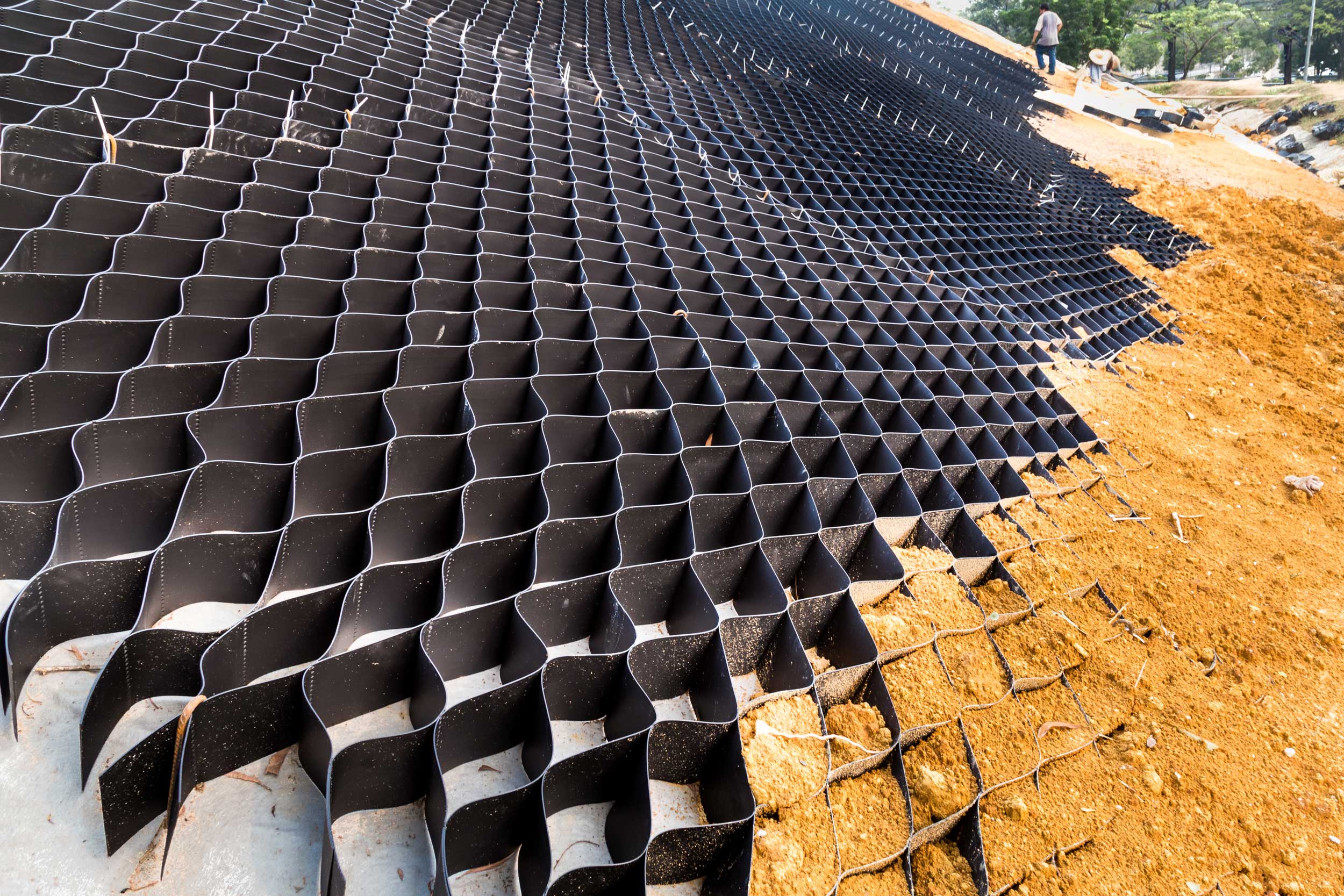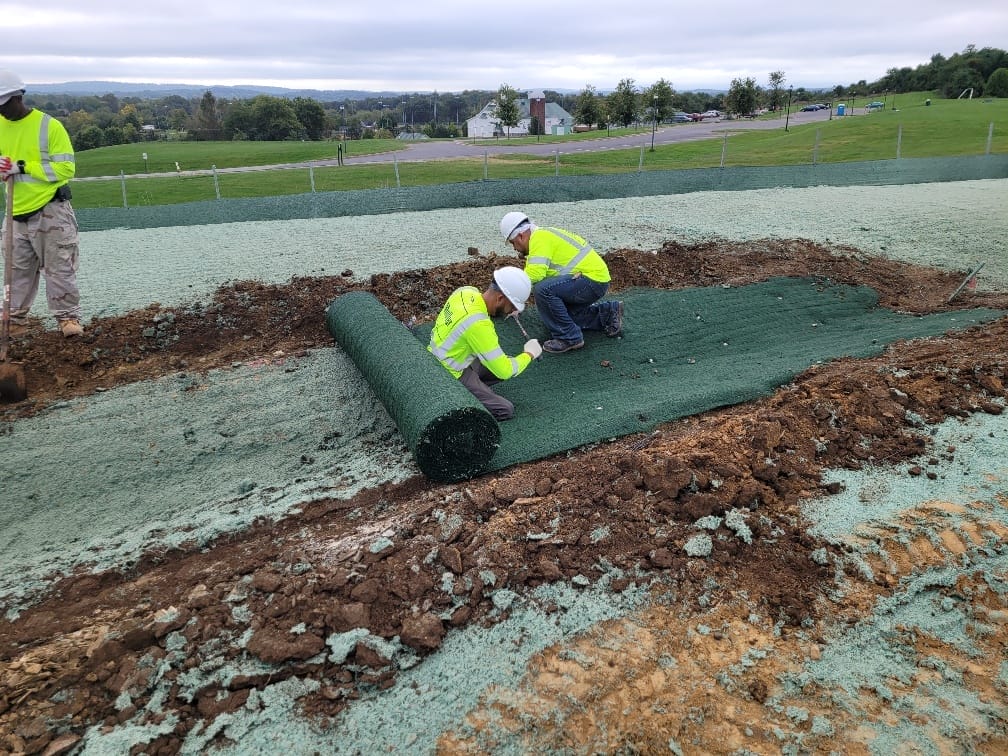Silt Fences: Your First Line of Defense Against Erosion
Wiki Article
Reliable Erosion Control Methods for Lasting Land Management
Are you trying to find means to efficiently take care of disintegration on your land? Look no more! This write-up will offer you with useful details on the relevance of disintegration control in sustainable land monitoring. Discover the different sorts of disintegration and their effect on your land, along with natural methods to control erosion. Find out exactly how to execute efficient erosion control measures and ensure appropriate surveillance and maintenance. Begin doing something about it today to protect and maintain your useful land.Relevance of Disintegration Control in Lasting Land Administration
Due to the fact that it aids stop soil deterioration and loss,Erosion control is vital for lasting land management. By executing efficient erosion control methods, you can guarantee the long-lasting health and wellness and efficiency of your land. Without appropriate disintegration control actions, dirt disintegration can take place, causing the loss of valuable topsoil that is rich in nutrients necessary for plant growth.One of the primary reasons disintegration control is important is because it aids to keep soil fertility. Furthermore, disintegration can lead to sedimentation in close-by water bodies, which can negatively influence marine ecological communities.
An additional key advantage of erosion control is the prevention of land deterioration. By executing erosion control methods such as terracing, contour plowing, and the use of cover crops, you can help avoid land deterioration and preserve the wellness of your land.

Kinds of Disintegration and Their Influence On Land
Understanding the numerous sorts of erosion and just how they impact the land can help you apply far better land monitoring practices. Disintegration is the process through which soil, rocks, and other products are gradually put on away and moved by all-natural pressures such as water, ice, and wind. There are four major sorts of erosion: sheet disintegration, rill disintegration, gully erosion, and mass motion erosion.Sheet disintegration happens when a slim layer of soil is gotten rid of evenly from the surface of the land. This sort of disintegration is usually brought on by hefty rainfall or incorrect land administration practices such as overgrazing or logging. Rill disintegration, on the other hand, happens when small networks or rivulets are based on the land because of the circulation of water. This can happen on high slopes or areas with compacted soil.
When larger gullies or channels are created due to the continual circulation of water,Gully disintegration is extra severe and happens. This sort of disintegration can create significant damages to the land, leading to loss of topsoil and vegetation. Lastly, mass activity disintegration refers to the activity of huge amounts of soil and rocks downhill due to the pressure of gravity. This can take place in the kind of landslides or sagging.
Recognizing these various sorts of disintegration and their effect on the land is critical for reliable land administration. By applying disintegration control methods such as terracing, contour plowing, and reforestation, you can decrease erosion and maintain the stability of the land. Additionally, exercising good land administration methods like appropriate crop turning, preserving ground cover, and using debris control procedures can even more aid in protecting against disintegration.
All-natural Disintegration Control Techniques for Sustainable Land Management
By implementing all-natural erosion control techniques, you can efficiently take care of and maintain the stability of your land. One reliable method is the usage of plant life, such as plants and grasses, to support dirt and avoid disintegration. Planting native varieties can help boost root thickness and bind the soil together, lowering the risk of silt fences disintegration triggered by heavy rains or wind (erosion control). Additionally, mulching is an additional all-natural strategy that can assist regulate erosion. By applying a layer of organic mulch, such as wood chips or straw, you can shield the soil from the impact of raindrops, minimizing dirt compaction and drainage. One more all-natural disintegration control approach is contouring the land. By developing shape lines or terraces on slopes, you can slow down the flow of water and permit it to penetrate the dirt, reducing erosion. In locations where erosion is a considerable concern, mounting disintegration control coverings or mats can be valuable. These floor coverings are constructed from eco-friendly products and aid stabilize the dirt till plants is developed. On the whole, by making use of these all-natural disintegration control methods, you can properly take care of and shield your land from disintegration, guaranteeing its long-term sustainability.Applying Reliable Disintegration Control Procedures

To properly take care of and shield your land from disintegration, you must consider implementing proven methods that can aid minimize the danger. One such approach is the use of disintegration control coverings. These blankets, made from artificial materials or all-natural fibers, are positioned on the dirt surface to maintain it and avoid erosion. They aid maintain wetness, lower debris drainage, and advertise the growth of plants. One more efficient technique is making use of terracing. Terracing includes creating degree systems on sloping land, which assists to slow down runoff and prevent erosion. It also enables the farming of crops on the terraced slopes. In addition, planting greenery is a crucial action in erosion control. Bushes, trees, and grasses have comprehensive origin systems that bind the soil with each other, decreasing disintegration caused by wind and water. Additionally, installing debris control measures such as silt fencings and debris ponds can assist catch sediment and stop it from going into neighboring water bodies. These actions are particularly vital during building tasks. By applying these proven disintegration control methods, you can successfully protect your land and reduce the threat of disintegration and its harmful impacts.
Tracking and Upkeep of Disintegration Control Strategies
When monitoring and maintaining erosion control steps, it's crucial to routinely examine the erosion control blankets, balconies, plant life, and debris control procedures to guarantee they are operating effectively and properly preventing erosion (Memphis Erosion Control Solutions excavation). By performing routine inspections, you can identify any kind of problems or deficiencies in the erosion control strategies and take essential actions to fix them
Beginning by inspecting the erosion control coverings. Look for signs of damage or wear, such as rips or exposed dirt.
Examine for indications of disintegration, such as sediment accumulation or irregular surface areas. Ensure that the balconies are effectively developed and kept to divert water circulation and decrease disintegration.
Assess the plants in the disintegration control area. Appropriate greenery protection helps maintain the dirt and protect against erosion.
Finally, evaluate the debris control steps, such as debris basins or sediment fencings. Make certain they are appropriately mounted and working as meant. Eliminate any kind of collected debris and make certain that the controls are correctly maintained.
Routine surveillance and upkeep of erosion control steps are essential for their long-term performance in protecting against disintegration and keeping sustainable land management techniques.
Verdict
In final thought, you need to prioritize erosion control for sustainable land administration. By recognizing the various types of erosion and their impact on the land, you can implement effective all-natural disintegration control approaches.Discover the different types of erosion and their effect on your land, as well as natural methods to control erosion. There are four major types of erosion: sheet disintegration, rill disintegration, gully disintegration, and mass motion erosion.
By applying erosion control techniques such as terracing, shape plowing, and reforestation, you can minimize disintegration and protect the honesty of the land (Memphis Erosion Memphis Erosion Control Solutions excavation Control Solutions excavation). In general, by utilizing these natural disintegration control methods, you can properly handle and Memphis Erosion Control Solutions trenching secure your land from erosion, guaranteeing its lasting sustainability
By understanding the various kinds of erosion and their impact on the land, you can implement effective all-natural erosion control techniques.
Report this wiki page